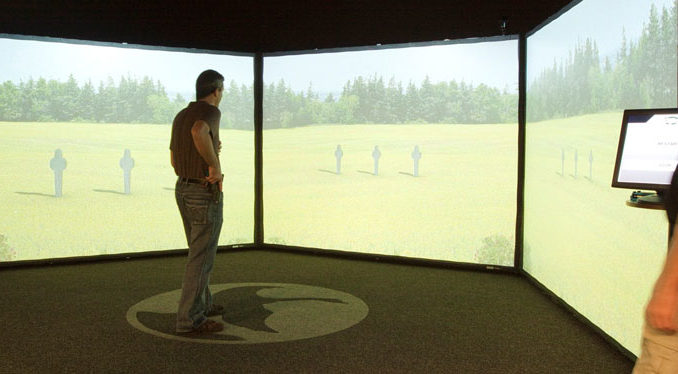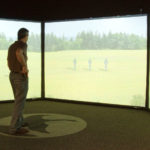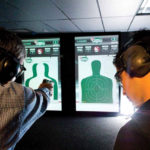
Practices (at GMA range) really makes perfect
Everybody wants to be able to make long or difficult shots, but how does that happen? Is it luck, skill or some combination of the two? Certainly, there are elements of both in any great shot, but we need to understand that accuracy is actually the second goal for using that new rifle, shotgun or pistol. Handling that gun safely is most important and should be practiced until it is ingrained before heading to the range or field to shoot.
I’m constantly amazed with how many people are lax with gun safety. The first and foremost rule is to treat every gun as though it was loaded. Everything else builds from this rule; whenever you are handed a gun, it is a simple thing to rack the bolt or slide, drop the cylinder, break the action or whatever to be sure it is not loaded. Once you are sure the gun is unloaded, you can move on to goal two, which is improving your accuracy.
Everything in gun safety builds from treating guns as if they are loaded. From there, the rules of never pointing a gun at anything you don’t intend to shoot, keeping your finger off the trigger until being ready to shoot and identifying your target and knowing what is behind it come into play. This is whether you are hunting or at the highest tech range available. Gun safety is a precursor to developing accuracy and good gun handling skills and can never be emphasized enough.
Accuracy comes from developing a good shooting routine and repeated use of the gun. Once a gun is zeroed, the accuracy is there as long as the sight picture and mechanics are followed. Familiarity brings accuracy with any rifle, shotgun or pistol. Range time will help reap rewards in the field.
The sight picture is the first part of accuracy. You must look down the sights or through the scope and see the same thing every time. This is just as true with a concealed carry pistol at a few feet as it is with a varmint rifle at a few hundred yards.
Most modern guns are capable of producing groups closer than the average hunter or shooter can hold them. This is a matter of concentration and training yourself not to rush, but to get the correct aim before squeezing the trigger. The gun can only shoot as accurate as you give it the opportunity.
Shooting mechanics are the other part of accuracy. Once you have trained yourself to get the same sight picture each time, you can work on controlling your body so you stabilize that sight picture and don’t move or jerk and somehow change your aim. This benefits greatly from practice and repetition.
On a range, you can practice standing, kneeling, sitting and prone positions for shooting. By finding the stance that allows you to control the sight picture and practicing it until you no longer have to think about where your elbow is or the angle of your wrist, you will improve accuracy. At the risk of sounding cliché, practice does indeed make perfect.
The final mechanics of good shooting are breathing and squeezing the trigger. Snipers learn to relax and slow their heart rate so they can shoot between beats. I don’t know that the average hunter needs quite that much control, but they need to be able to calm themselves when the buck of a lifetime arrives. Not only does that excited ,ragged breath make it difficult to hold steady, it can build adrenaline to the point that the trigger is jerked or some other movement pulls the aim astray. It can fog the scope too.
Speaking of squeezing the trigger, there are a couple of things to overcome there. The urge to pull the trigger as soon as the proper sight picture is acquired is one and shoulder flinch is another. Calming the pull reflex comes with practice. That ties in with relaxing the adrenaline from seeing an outstanding animal.
Shoulder flinch is tough to overcome, especially with high- power rifles and magnum shotgun or handgun loads. Shoulder flinch is a reaction to protect the body from recoil, and once it develops, it quickly becomes ingrained and involuntary. One way to overcome shoulder flinch is to shoot rimfires and guns with minimal recoil for a while and slowly re-adjust to recoil.
Another way to overcome shoulder flinch is to learn to creep the trigger to the point where you don’t know when it will break and fire the round. This is more difficult to learn, but is what worked for me when some time back. I don’t shoot as quickly as I used to, but my accuracy is back. I first practiced with snap caps, so I knew there wasn’t any recoil coming and could relax, and then I moved back to live ammo. Muzzle brakes make shooting loud but can help with eliminating shoulder flinch by eliminating most of the recoil.
All of this so far deals with shooting and hunting in a recreational setting. What happens if you add the excitement and adrenaline of a personal-protection situation? This isn’t something you can really practice — or is it?
There is no way to safely practice live self-defense scenarios with live ammo. However, I was recently introduced to a virtual system so real my adrenaline was jacked up to the point my hands were shaking lightly and the hairs on my arms and neck were standing up.
Pretty much all sportsmen are familiar with Gander Mountain stores. North Carolina is home to three — Fayetteville, Greensboro and Mooresville — and at least two more are coming: Winston-Salem and the Raleigh area.
Gander Mountain Academies are special facilities housed at six Gander Mountain stores: Lake Mary. Fla.; La Crosse, Wis.; Lakeville, Minn.; Madison, Wis.; Spring, Texas; and Wichita, Kan. They are training facilities that benefit beginning shooters to experienced hunters and law-enforcement professionals. The staff is primarily law-enforcement and military-trained professionals, and the academies have state-of-the-art professional training facilities, plus house live-ire and simulated ranges.
I visited a GMA while in Florida for a meeting and was very impressed. I expected a shooting range with some classes and personalized instruction, but it is much more than that. Technically, everything is first class — as you would expect. The options and variety of the virtual ranges blew me away.
On the pistol ranges, real Berettas and Glocks were used, but the barrels were changed to laser/simulator barrels, and the clips are replaced with parts that use CO2 cartridges to work the actions and create recoil. These are real guns and could be returned to live fire weapons in a matter of minutes.
The virtual ranges can be set for almost any shooting situation. At Lake Mary, many people were shooting different varieties of qualifying targets. Once an instructor felt comfortable with my gun-safety practices and shooting, we moved to the first of the simulators.
The first simulator was a room with a 180-degree screen. I mainly shot targets and several metallic target courses. The trap and skeet program looked interesting, but the shotguns were at another academy for a special program.
The second simulator room had a 300-degree screen. After some targets to get acclimated to looking behind, we switched to self-defense scenarios. Everything was life-size, and the people spoke realistically, so it wasn’t at all like playing a video game. Some situations were resolved without firing, and some required shooting in self-defense. It wasn’t just about shooting, but training for reacting appropriately in these situations.
After every scenario, my instructor would explain the situation and point out what should have triggered my reactions. The first time I missed a telltale movement and got shot; I was so engrossed in the simulator I looked down to see if I had a hole in my chest. Seeing this reaction, my instructor reminded me that the training was as much or more about defusing or avoiding these situations as learning to shoot my way out. Avoiding shooting was always the preferred option, but that wasn’t always possible.
In addition to the civilian courses and self-defense simulators, there are also training simulations for law-enforcement personnel; I was told they was far more graphic and detailed.
During a behind-the-scenes tour, we went through a warehouse area and there were a bunch of huge boxes labeled for Gander Mountain in Greensboro, N.C. I asked and was told that Greensboro was initially slated to receive a Gander Mountain Academy, but the plans changed before the equipment was shipped. I asked if they might be sent to one of the new North Carolina stores, as Lake Mary is the easternmost academy, and I didn’t get a straight answer.
The answer was a single word, “Maybe,” but it came with a smile he tried but couldn’t hide.






Be the first to comment